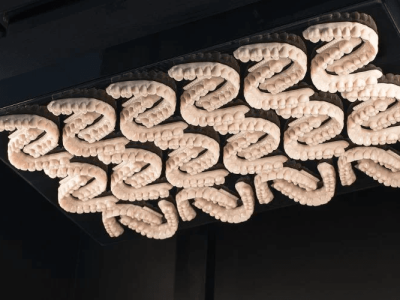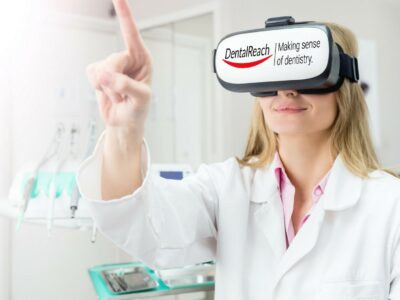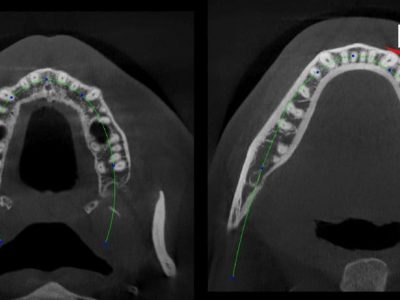Tooth extractions and dental implants are sometimes part and parcel of the same process. Implant placement is a straightforward procedure, the size of the implant should be either equal to or greater than residual root socket. During the procedure, clinicians experience moderate to large gap between implant and walls of the socket mostly in the molars. However, the shape of the socket is not cylindrical. The larger gap in molar is defined as the jumping distance, exhibiting the periphery of the implant and surrounding bone. Both the vertical and horizontal components must be considered to get an aesthetic favourable outcome. Effect of vertical component is inclined towards initial stability at the time of implant and it is trouble free.
History of bone grafting
Bone grafting is a surgical procedure that took a bigger step with the invention of pre-prosthetic oral surgery in dental care segment. These materials along with ceramics helped in providing some bridging to patients who were experiencing severe jaw atrophy. When teeth are lost, jaws reach atrophy to a certain level. The entire process is termed as basal bone; with time, jaws strength decreases. Meanwhile, the treatment does not focus only at functional restoration but also aims to prevent jaw fractures. Tooth loss leaves behind narrow hoop in mandible bone and resembles as a flat pancake for maxillary bone. In earlier days, displacing dentures was the biggest challenge while eating or talking, it was prevented by musculature of the oral cavity. Sometimes a skin grafting was harvested from the patients’ thighs to apply it intra-orally. In recent dentistry, modern amenities are combined with a contemporary approach to prevent tooth loss.
Grafting for Dental Implants
The earliest traces of dentistry depicts bone grafting which included gathering of large quantities of patients’ bone. This horrendous process was known as autogenous graft. The impact of modern technology has changed the older method of grafting. Now, bones are harvested from animals and it is popularly known as Xenograft. Xenograft comprises natural bone mineral sterilized for several years. Guided tissue regeneration is a procedure through biochemical action, popularly termed as natural bone in grafting. Re absorption and replacement of patients’ bone occur with the progression of time.
Some common bone grafting involves
Socket graft or alveolar ridge preservation
Ridge graft is well-designed to fill the void and the empty space is filled with quality bone. It requires 3-6 months before implant treatment, depending on the size of the tooth. Xenograft is the material used for ridge preservation consisting of bovine bone. It is processed through a procedure of freeze-drying which contains only natural bone, mineral content and also renders as a sterile product. This product is applied after tooth extraction. Pledget collagen is used with one or two dissolvable sutures and it is retained to consolidate.
Block bone graft or autogenous ramus/chin graft
It is used in common etiologies such as
- Bone loss due to dental trauma
- When teeth are extracted without an immediate socket graft, implant/tooth re-implantation
- The tooth is missing with extensive bone destruction due to cysts, tumours and or infections
- Congenitally missing permanent teeth in the area of jaws due to supporting bone which failed to develop.
The autogenous graft is commonly used grafting procedure in the block form. In this procedure a small bone block approximately about 1 cm square is removed either from ramus or chin, then the bone is transferred to bone deficiency area, after that one or two tiny screws along with bovine bone particulate and membrane of collagen. Nearly 4 months is allowed for the graft to fuse to the jaw bone underlying before placing an implant. Once the mature graft is seen, an implant can be placed and it also acts as a support for the soft tissue which aesthetically resonates as well as maintaining hygiene is considered to be easy.
Sinus lift procedure or Subantral graft
It is performed to allow implants for replacement of maxillary molars and also in sinus a small window is performed above the maxillary teeth. The bovine bone is filled with a balloon-like space which is formed as a small cavity. Nearly 6-9 months is required for this bone to consolidate in order to replace a natural bone, forming a scaffold. There are 2 possibilities since this procedure relates to implant placement such as immediate placement of the implant with subantral grafting and delayed placement of the implant with primary subantral grafting.
Replacing missing teeth with dental implants involves grafting, which the dentist before performing the procedure must explain in detail. Any question asked from the patient regarding the experience of preoperative and postoperative procedures must be addressed in detail. The results are much effective and the outcome is best when the clinician has more knowledge about procedures of implant placement and also experience in placing it.
Bonus: Download our monthly e-bulletin!Click here to get it
DISCLAIMER : “Views expressed above are the author’s own.”




















Comments